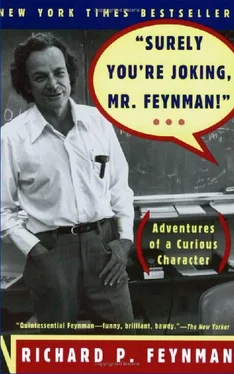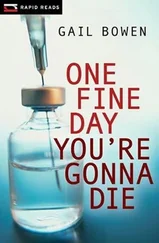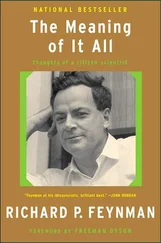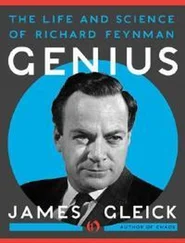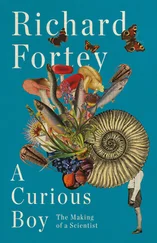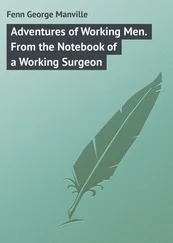As a result of these observations I began to get a little theory. One of the reasons that I liked to look at dreams was that I was curious as to how you can see an image, of a person, for example, when your eyes are closed, and nothing’s coming in. You say it might be random, irregular nerve discharges, but you can’t get the nerves to discharge in exactly the same delicate patterns when you are sleeping as when you are awake, looking at something. Well then, how could I “see” in color, and in better detail, when I was asleep?
I decided there must be an “interpretation department.” When you are actually looking at something—a man, a lamp, or a wall—you don’t just see blotches of color. Something tells you what it is; it has to be interpreted. When you’re dreaming, this interpretation department is still operating, but it’s all slopped up. It’s telling you that you’re seeing a human hair in the greatest detail, when it isn’t true. It’s interpreting the random junk entering the brain as a clear image.
One other thing about dreams. I had a friend named Deutsch, whose wife was from a family of psychoanalysts in Vienna. One evening, during a long discussion about dreams, he told me that dreams have significance: there are symbols in dreams that can be interpreted psychoanalytically. I didn’t believe most of this stuff, but that night I had an interesting dream: We’re playing a game on a billiard table with three balls—a white ball, a green ball, and a gray ball—and the name of the game is “titsies.” There was something about trying to get the balls into the pocket: the white ball and the green ball are easy to sink into the pocket, but the gray one, I can’t get to it.
I wake up, and the dream is very easy to interpret: the name of the game gives it away, of course—them’s girls! The white ball was easy to figure out, because I was going out, sneakily, with a married woman who worked at the time as a cashier in a cafeteria and wore a white uniform. The green one was also easy, because I had gone out about two nights before to a drive-in movie with a girl in a green dress. But the gray one—what the hell was the gray one? I knew it had to be somebody; I felt it. It’s like when you’re trying to remember a name, and it’s on the tip of your tongue, but you can’t get it.
It took me half a day before I remembered that I had said goodbye to a girl I liked very much, who had gone to Italy about two or three months before. She was a very nice girl, and I had decided that when she came back I was going to see her again. I don’t know if she wore a gray suit, but it was perfectly clear, as soon as I thought of her, that she was the gray one.
I went back to my friend Deutsch, and I told him he must be right—there is something to analyzing dreams. But when he heard about my interesting dream, he said, “No, that one was too perfect—too cut and dried. Usually you have to do a bit more analysis.”
The Chief Research Chemist of the Metaplast Corporation
After I finished at MIT I wanted to get a summer job. I had applied two or three times to the Bell Labs, and had gone out a few times to visit. Bill Shockley, who knew me from the lab at MIT, would show me around each time, and I enjoyed those visits terrifically, but I never got a job there.
I had letters from some of my professors to two specific companies. One was to the Bausch and Lomb Company for tracing rays through lenses; the other was to Electrical Testing Labs in New York. At that time nobody knew what a physicist even was, and there weren’t any positions in industry for physicists. Engineers, OK; but physicists—nobody knew how to use them. It’s interesting that very soon, after the war, it was the exact opposite: people wanted physicists everywhere. So I wasn’t getting anywhere as a physicist looking for a job late in the Depression.
About that time I met an old friend of mine on the beach at our home town of Far Rockaway, where we grew up together. We had gone to school together when we were about eleven or twelve, and were very good friends. We were both scientifically minded. He had a “laboratory,” and I had a “laboratory.” We often played together, and discussed things together.
We used to put on magic shows—chemistry magic—for the kids on the block. My friend was a pretty good showman, and I kind of liked that too. We did our tricks on a little table, with Bunsen burners at each end going all the time. On the burners we had watch glass plates (flat glass discs) with iodine on them, which made a beautiful purple vapor that went up on each side of the table while the show went on. It was great! We did a lot of tricks, such as turning “wine” into water, and other chemical color changes. For our finale, we did a trick that used something which we had discovered. I would put my hands (secretly) first into a sink of water, and then into benzine. Then I would “accidentally” brush by one of the Bunsen burners, and one hand would light up. I’d clap my hands, and both hands would then be burning. (It doesn’t hurt because it burns fast and the water keeps it cool.) Then I’d wave my hands, running around yelling, “FIRE! FIRE!” and everybody would get all excited. They’d run out of the room, and that was the end of the show!
Later on I told this story at college to my fraternity brothers and they said, “Nonsense! You can’t do that!”
(I often had this problem of demonstrating to these fellas something that they didn’t believe—like the time we got into an argument as to whether urine just ran out of you by gravity, and I had to demonstrate that that wasn’t the case by showing them that you can pee standing on your head. Or the time when somebody claimed that if you took aspirin and Coca-Cola you’d fall over in a dead faint directly. I told them I thought it was a lot of baloney, and offered to take aspirin and Coca-Cola together. Then they got into an argument whether you should have the aspirin before the Coke, just after the Coke, or mixed in the Coke. So I had six aspirin and three Cokes, one right after the other. First, I took aspirins and then a Coke, then we dissolved two aspirins in a Coke and I took that, and then I took a Coke and two aspirins. Each time the idiots who believed it were standing around me, waiting to catch me when I fainted. But nothing happened. I do remember that I didn’t sleep very well that night, so I got up and did a lot of figuring, and worked out some of the formulas for what is called the Riemann-Zeta function.)
“All right, guys,” I said. “Let’s go out and get some benzine.”
They got the benzine ready, I stuck my hand in the water in the sink and then into the benzine and lit it … and it hurt like hell! You see, in the meantime I had grown hairs on the back of my hand, which acted like wicks and held the benzine in place while it burned, whereas when I had done it earlier I had no hairs on the back of my hand. After I did the experiment for my fraternity brothers, I didn’t have any hairs on the back of my hands either.
Well, my pal and I met on the beach, and he told me that he had a process for metal-plating plastics. I said that was impossible, because there’s no conductivity; you can’t attach a wire. But he said he could metal-plate anything, and I still remember him picking up a peach pit that was in the sand, and saying he could metal-plate that—trying to impress me.
What was nice was that he offered me a job at his little company, which was on the top floor of a building in New York. There were only about four people in the company. His father was the one who was getting the money together and was, I think, the “president.” He was the “vice-president,” along with another fella who was a salesman. I was the “chief research chemist,” and my friend’s brother, who was not very clever, was the bottle-washer. We had six metal-plating baths.
Читать дальше
